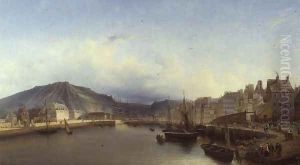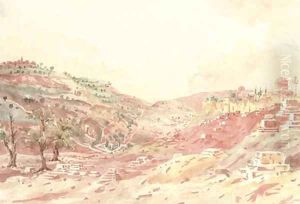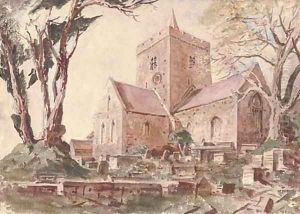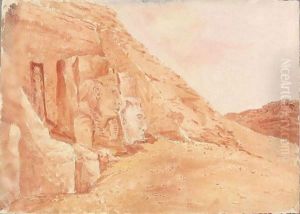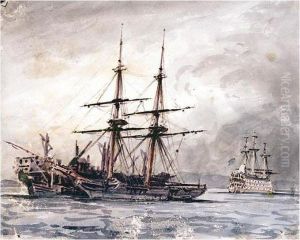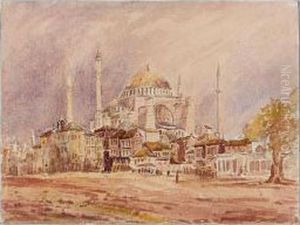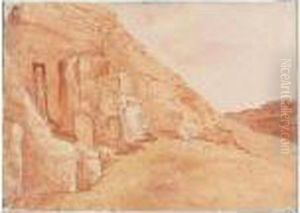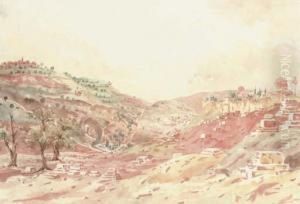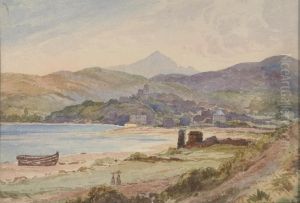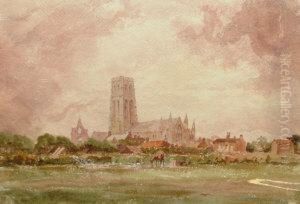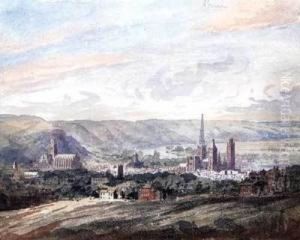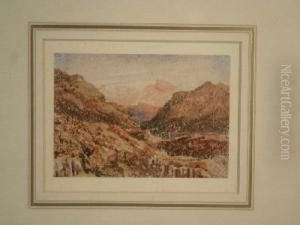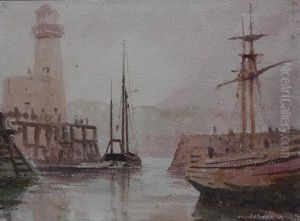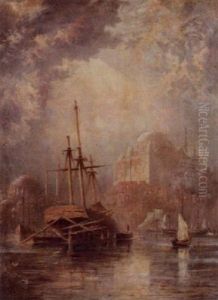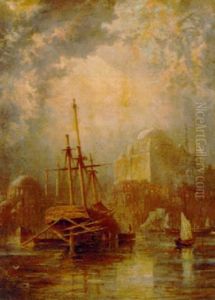John Louis Petit Paintings
John Louis Petit was an English clergyman and landscape painter, noted for his contributions to the art of watercolor and his architectural sketches, particularly of ecclesiastical buildings. Born on May 31, 1801, in Ashton-under-Lyne, Lancashire, Petit was not only immersed in the world of art from a young age but was also deeply influenced by his religious upbringing. He belonged to a family that valued both intellectual and artistic pursuits, which played a significant role in shaping his career.
Petit was educated at Eton College and later at Trinity College, Cambridge, where he graduated in 1822. Despite his deep engagement with the church—having been ordained in 1824—Petit's passion for art, especially painting and sketching landscapes and buildings, never waned. He traveled extensively throughout Britain and Europe, capturing the essence of the architecture and landscapes he encountered. His works, characterized by their detailed and picturesque qualities, were widely appreciated during his lifetime.
Unlike many artists of his time, Petit did not rely on art as his primary source of income, thanks to his position within the church and his family's wealth. This independence allowed him the freedom to explore and develop his unique style without commercial pressures. Petit was particularly fascinated with Gothic architecture, and his sketches and paintings played a significant role in the Gothic Revival movement of the 19th century. He was an advocate for the preservation of historic buildings at a time when this was not a popular stance, making his work not only artistically significant but also culturally and historically important.
John Louis Petit exhibited at the Royal Academy and the British Institution but was most closely associated with the Society of Painters in Water Colours, where he exhibited over 300 works. Despite his prolific output and the quality of his work, Petit did not achieve the same level of fame as some of his contemporaries. However, his contributions to architectural drawing and the preservation movement have been reassessed and celebrated in more recent years.
Petit passed away on December 1, 1868, in Lichfield, Staffordshire. Today, he is remembered as a pioneering figure in the field of architectural sketches and watercolor painting, with his works held in various collections and museums across the United Kingdom. His legacy endures through his contributions to the preservation and appreciation of architectural history and the natural beauty of landscapes.
